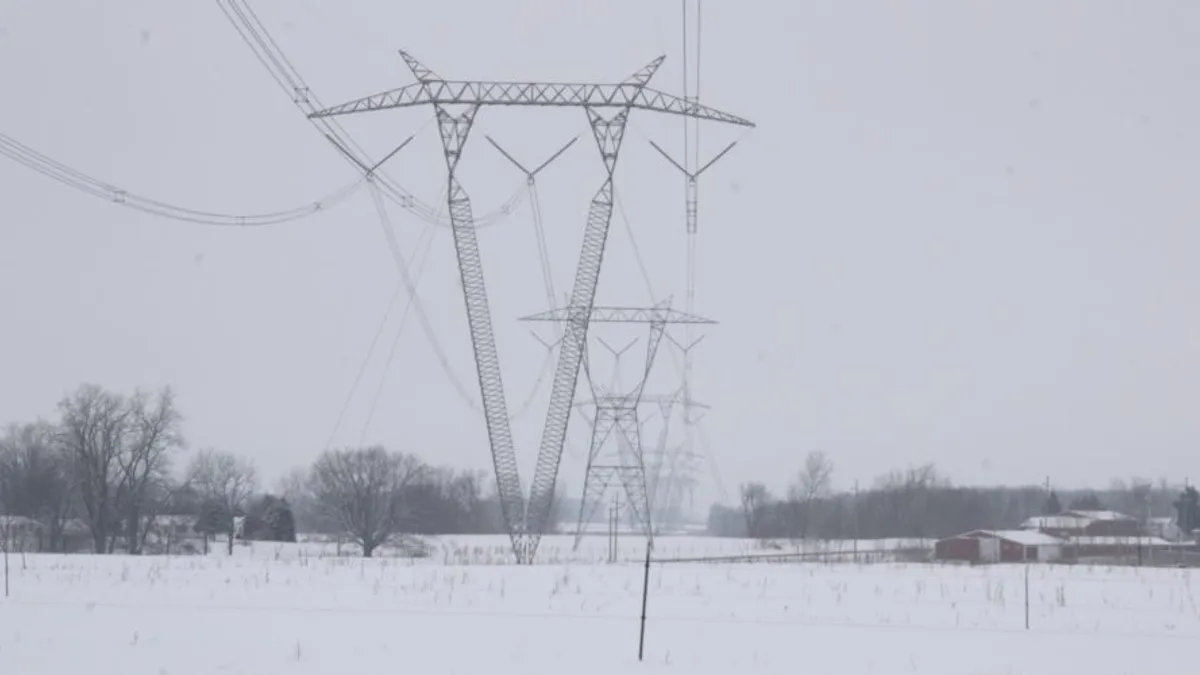On May 23, the U.S. Court of Appeals for the D.C. circuit vacated Federal Energy Regulatory Commission (FERC) Order 745, a directive which brought wholesale demand response regulation and pricing under FERC's jurisdication. Former FERC Chairman and demand response champion Jon Wellinghoff called the ruling a "devastating" blow for demand response; generators deemed it a victory.
This week, Utility Dive takes a look at the wide-reaching implications of the decision and what it means for the future of demand response.
FERC Order 745
Under the terms of Order 745, demand response was considered on par with other wholesale power supply resources like power plants. Because demand response had the same market value as power plants, consumers that provided demand response were to be paid according to the Locational Marginal Price (LMP). This, FERC said, "helps to ensure the competitiveness of organized wholesale energy markets and remove barriers to the participation of demand response resources, thus ensuring just and reasonable wholesale rates."
But in a 2-1 decision in May, the Court of Appeals disagreed. The court instead agreed with petitioners the Electric Power Supply Association (EPSA), the national trade association for competitive power suppliers, that "FERC’s new rule goes too far, encroaching on the states' exclusive jurisdiction to regulate the retail market."
Chief amongst the court's concerns is that demand response is a matter for the retail markets, which are entirely under state control and not subject to regulation by FERC. Further, the Court argued, demand response is not actually a source of generation; it does not involve a direct sale of energy to the wholesale markets by consumers, who "'participate' only by declining to act." Rather, consumers engaging in demand response were being given preferential treatment by the FERC, being paid the LMP and saving on the avoided cost of electricity. This, the court ruled, overcompensates demand response.
This referential treatment for demand response comes at the expense of generators, EPSA CEO John Shelk told Utility Dive. "Policymakers were sending a signal to investors, saying 'don’t invest in this, as we are going to have demand response' instead," he said.
In response to the court's decision, FERC has made an appeal for the case to be reheard in an en banc review, which means the case would be heard in front of the full judiciary of the court instead of just the three-judge panel. FERC was joined by other entities such as grid operator PJM Interconnection.
The appeal focuses on several points:
- FERC's rule is "narrowly tailored" so that it only affects demand response in the wholesale market, which affects wholesale rates.
- Demand response must have a "net benefit" for retail customers and reduce peak demand.
- States, under whose jurisdiction the court says demand response lies, can already opt out of providing any wholesale demand response to the regional markets. None have done so.
- Demand response is already helping keep the nation's electricity supply reliable.
As it stands, the ruling would "potentially invalidat[e] all demand response participation at any compensation level (not just full locational marginal price) in any wholesale market (energy, capacity or ancillary services)," FERC said.
Industry response
Grid operator PJM Interconnection agrees with FERC. PJM has a relatively large amount of demand response penciled in for the next few years -- and it was not the only region that relied upon demand response to back up its electricity supply over the unexpectedly cold winter months in 2014.
The Maryland Public Service Commission said that if the "decision goes into effect ... we anticipate significant adverse consequences" and that "reliability could be affected on peak demand" days. The Delaware Public Service Commission has echoed Maryland’s concerns, saying that "unnecessary costs" may be passed on to utility Delmarva’s customers—and that Delmarva may fail "to achieve its statutory goals regarding energy efficiency and peak load reduction."
EPSA dismissed PJM and others' concerns over reliability as "misplaced" because demand response is "an inferior resource" compared to "conventional power plant" generation. "There is not a reliability crisis if this court decision stands," said John Shelk. Even if there were, Shelk added, that still doesn't confer FERC the authority to regulate demand response.
But former FERC chairman and now partner at law firm Stoel Rives LLP Jon Wellinghoff said reliability would become a serious issue for states and grid operators under the latest ruling. The potential impact could be "devastating," Wellinghoff said.
Part of the issue, Frank Lacey, vice president of regulatory and market strategy at demand response provider Comverge, told Utility Dive, is that a lack of collaboration across regional electricity grids "just makes it that much more difficult" to ensure supply remains reliable.
"Clearly it is in the best interest of the markets to have centralized control over demand resources," he said. "You can look at demand resources like a generation plant. If you are a market operator you don't want power plants outside of your control. The federal regulations provide vision and awareness of demand response to a larger group of people."
On the issue of payments for demand response, the court's argument that FERC unfairly compensates retail customers by paying them the LMP doesn't stand up, said Lacey.
Shelk argues that "it is absurd that we would treat that resource as the same as a conventional power plant." FERC Commissioner Tony Clark agreed with this view: "It's no wonder the court adopted the term 'lure'" to describe the compensation rate for demand response that enters the wholesale markets, as "that is exactly what has happened in recent years."
Instead, demand response should be paid for at a more appropriate level determined as part of the retail market, thus making it a state, not federally, mandated rate, according to Shelk. That could help demand response "thrive" as more utilities engage in what would become more cost-effective demand response programs that don't come at the expense of investing in new generation. According to a recent survey, about 14% of U.S. customers currently engage in a demand response program with their utility. Many more would do so if the "right incentives" were in place.
Lacey disagrees with this logic. "If you pay LMP minus G [the cost of generation], which is the alternative, you are effectively paying generators for doing nothing. You are paying them not to produce power. It doesn’t make sense to incentivize a generator to not generate," he said. "No matter what way this is going to come out, you are going to provide an economic incentive to someone."
What comes next
It will be some time before the court decides whether or not to hear the case en banc. If it declines, as many suspect it will, FERC could then take the matter to the U.S. Supreme Court. The issue "merits" that level of attention, said Wellinghoff.
Regardless of whether or not Order 745 is reinstated in full, modified, or vacated in its entirety, all of the sources Utility Dive spoke to were certain of one thing: Demand response is here to stay—Order 745 or no Order 745.
"Demand response is not dead under the court decision," said Shelk. Instead, revoking FERC’s control of demand response in the wholesale market would make "clear responsibility lies at a state level" for demand response, which will create a "more lively" effort to employ load reduction measures across the U.S., according to Shelk.
Lacey doesn’t agree that vacating Order 745 will surely benefit demand response as a whole, but he does agree it will continue to be used as a tool whether the court decision stands or not. Demand response "will exist. It will just exist in a different framework, which I think harms the market from a control aspect," he said. The Maryland Public Utilities Commission agreed, stating: "To separate demand response from market participation will increase prices, confuse operations and make planning unnecessarily complex."
This issue could be overcome, according to demand response provider EnerNOC, if states work harder to ensure that the savings from demand response for customers, which amounted to almost $12 billion in the PJM market last year, were not lost.
The Advanced Energy Management Alliance, which supports the FERC appeal, summed up why demand response does not lose its appeal as a result of the ruling: "In the ruling, the court acknowledged that demand response benefits consumers by lowering wholesale costs and increasing system reliability. Many consumers rely on the value of demand response at the wholesale level to reduce energy costs and retain the cost-effectiveness of their industries, businesses, and home energy management systems."
"I think we provide great value," said Lacey. "And that value doesn’t go away."




















